Electric vs Gas Fireplace – Pros, Cons, Comparisons and Costs
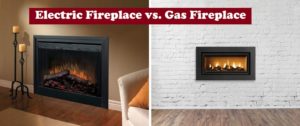 Note: As an Amazon Associate, I earn from qualifying purchases.
Note: As an Amazon Associate, I earn from qualifying purchases.
Nothing feels great than sitting beside a fireplace on a winter day. If you don’t yet have a firebox and chimney into your house, the easiest solution is to add either an electric or gas fireplace.
Both create warmth and ambiance, but the way they operate and look is different. These differences are outlined below so you can decide which one will work in your home.
Electric Fireplace
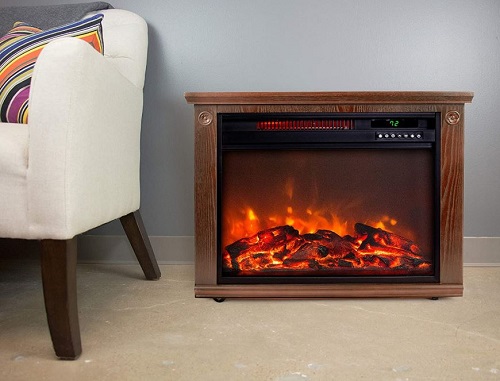
Pros
- Inexpensive
- Quick and easy installation
- Cheaper to operate
- Little to no maintenance
- Little safety risk
- Increases resale value of the home
Cons
- Doesn’t create real flames
- Doesn’t heat as well
- Can take longer to feel the heat
- Less eco-friendly
Gas Fireplace
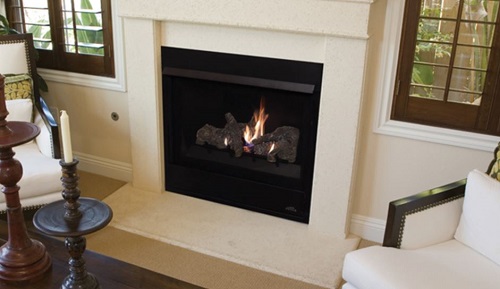
Pros
- Produces real flames
- Heats the area quickly
- Can reduce the use of furnace
- More environmentally friendly
- Low maintenance
- Increases resale value of the home
Cons
- Costs more to operate
- Costs more for buying and install
- Glass doors are hot enough to burn
- Possible for gas flow
Appearance
While you are not likely to mistake either electric or gas fireplaces for a conventional wood-burning model, both come in a range of designs that complement many rooms.
Of the two, gas fireplaces have a realistic appearance because the gasoline produces a fire you can see and warmth you can feel.
An electric fireplace doesn’t produce real flames but still generates heat. Rather than flames, they project an image of a burning log. Based on the model you buy and its quality, this picture can be artificial or persuasive in its appearance.
Some fireplace models have features such as LED lighting, videos of burning wood, or even hologram imaging. They might also have sound effects that can make the unit sound like a crackling fire, and you’ve got choices for a setup like a wall mounting, which can also make the fireplace look more authentic.
Energy-Efficiency
For energy-efficiency, there is a broad range based on model and size. Gas fireplaces consume around 7,000-16,000 BTUs, are about 70-90% efficient at transforming energy to warmth, and cost approximately $60 annually to operate.
Electric fireplaces provide an output that’s depending on the electrical current. The standard 120v outlet will generate just over 5000 BTUs, which can warm up around 500 square feet. They do turn all their energy into heat. However, They cost approximately $25 annually to run.
Keep in mind that while an electrical heater is more efficient on the surface, it won’t warm a gas fireplace and the room. Therefore, you might find that using a gas fireplace; you can turn off your thermostat and stay warm. With an electric fireplace, you will possibly have another heat source running, which may neutralize the savings.
Installation
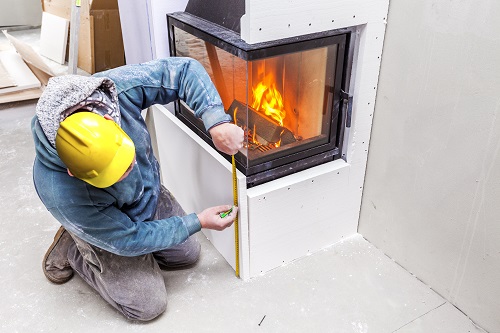
Both gas and electric fireplaces are much simpler to install than a wood-burning fireplace.
A gas fireplace needs that the gas line is run to the area, and a small vent is required for most models. Non-venting systems are available if you are not able to run a vent. The unit is then installed in place and hooked up.
Bear in mind that if you not own a gasoline line or are in a place where gas doesn’t run, you’ll want to use propane. If your home heating device already runs off propane, you may be able to run a line right to the area. You might have to integrate a smaller propane tank into the design. This may add costs to the project, and the tank itself will occupy space, so to hide it inside the fireplace design, you might need to change the project’s scope.
Electric fireplaces plug into where they’ll be used. If you do not have a socket there, it is easy to have one installed, and then the device can be placed.
Electric fireplaces can be portable, which means that you can move them around when you want them, or they can be wall-mounted for a better look.
Wall-mounted components are made to recess into the wall, so you might need a handyman or a carpenter to help move some studs in the wall to accommodate the box. Setting up the box once the wall is ready is usually a fast process and needs just a few minutes.
Ideally, both should be installed by a licensed professional if a socket or gas line has to be installed. Otherwise, most people can set up an electric unit by themselves, while a gas fireplace will require professional assistance every time.
Costs
A fully-built gas fireplace can vary from $900 to $3,000 for the device itself. A little gas exhaust tube for venting and running the unit can range from $200 and $500, including setup—additional installation of this gas-burning fireplace elements price between $1,500 and $3,000.
The gas line connection for those who have an existing gas line goes between $150 and $300. To get a new line, the price will vary between $300 and $800. This makes the total cost for a gas fireplace between $2,750 and $7,300.
Electric fireplaces don’t need special plumbing or vents. You need an outlet. The expense of a built-in unit ranges from $300 to $1,000.
If you need a new socket, there’s an extra cost of about $200 to $750 based on place, and if you’re opening a wall to get a recessed unit, you should expect to pay another $200 to $500 in setup fees. This makes the total for an electric fireplace involving $700 and $2,250.
Maintenance
Gas fireplaces are considered low maintenance compared to wood-burning fireplaces, but they do require some annual maintenance. The vent must be examined yearly and cleaned as needed. Valves should be checked for leaks and to be sure that they are operating correctly.
Electric fireplaces don’t have any regular maintenance because they do not burn gas or need vents.
Safety

Gas fireplaces become hot quickly. While they are usually considered safe, the glass doors that house the device can become hot enough to burn if touched.
Like any gas appliance, a gas flow might occur if the unit isn’t maintained correctly, resulting in a fire hazard and health issues if not detected and repaired with quickly. Most devices have a gas shut off valve in this function.
Electric units have fewer security issues, but they may lead to electrical fires if they become degraded like any space heater. Most new devices have automatic shut-off characteristics that kick in if the system becomes overheated, helping avoid fires.
Required Time to Heat
Both gas and electric fireplaces start producing heat immediately. The heat from a gas fireplace could be felt more rapidly within the room than an electric unit, based on how far away you are.
Environmental Concerns
Gas fireplaces are thought to be efficient as they convert up to 90% of their energy into heat. But gas is a non-renewable source, and burning it releases some particles into the air.
It is deemed clean-burning, and while it does not make harmful levels of carbon dioxide inside the home, it generates some CO2, which is released into the atmosphere
Electric fireplaces use less energy and don’t directly discharge particles into the atmosphere, but the method of generating electricity may produce CO2 gas as well. This depends on the energy blend and how it is made. Electricity can be a non-renewable resource based on where you are located and your power utility.
Resale Value
Adding a built-in fireplace into a home that doesn’t yet have you can increase resale value. That is regardless of the kind of fireplace you have, so adding a built-in electric or gas fireplace to your home could increase its value.
There are a lot of options in the marketplace for the two kinds. Below you’ll find our top selections for both including the best devices overall and the units for those on a budget.
Electric Fireplaces
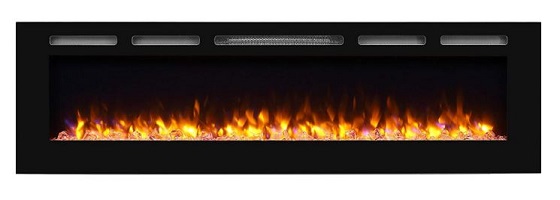
Touchstone 80004 Sideline Electric Fireplace
This is an ultra-modern electric fireplace invented to be installed within the wall for a custom made design.
It’s five fire configurations, and the flames have an appearance together with hearth choices and log. It’s settings that are both low and high.
It has a built-in timer for automatic shut off and can heat a room to 400 sq.ft.
R.W. Flame Electric Recessed Fireplace
This is a slick, contemporary-looking fireplace that recesses into the wall.
It can be constructed between the studs of two different wall types for a simpler installation. It’s multiple operating modes and can be accessed via remote control or a touch screen.
LED lighting makes the flames appear realistic, and it has two settings for comfort and energy savings. Also, it can heat a room to 400 sq.ft. easily.
It features an auto-shutoff for safety and to prevent overheating the unit or space.
PuraFlame
If you want a more classic appearance for your fireplace, check this unit out of PuraFlame.
It is a recessive insert that gives you the presence of a standard firebox and comprises a life-like resin log and three flame settings to provide you a realistic-looking fire.
Puraflame is built to be easy to install and has a detachable thermostat for ease of use. And can warm a room up to 400 sq.ft. in dimensions and uses LED lights for better functionality and energy usage.
Gas Fireplaces

Empire Boulevard Vent Free Natural Gas Fireplace
This is a super attractive and contemporary vent-free gas fireplace.
It uses an intermittent pilot system and contains an adjustable thermostat for the ultimate in control and heat production. It’s built to be installed in-wall, so you can have a modern look without taking up space.
It works on the remote control for ease of use and can generate up to 32,000 BTUs, so it will heat even spacious rooms consistently and evenly. It includes a wire mesh barrier.
Hearth Natural Gas Vent Free Fireplace
If you want to find a traditional-looking built-in fireplace, check out this system from Pleasant Hearth.
It comprises a real wood mantel for a conventional appearance that may complement many homes. Also comes with a programmable thermostat and a remote for better control of the fire and the temperature.
It generates around 32,000 BTUs, which means you are going to heat large areas around 1,100 sq.ft.
Additionally, it has a dual burner, so you get two sets of flames for a better-looking fire.
Napoleon Grandville V.F. Series Gas Fireplace
If what you’re searching for is a reliable, good looking fireplace with high output, this is the unit for you.
This device has a transitional look that can be installed into the wall or given a wooden mantle for various styles. It features an oxygen depletion sensor that will turn the unit off if too much CO2 is found in the area.
Although, it also has a variable heat configuration, so you can have better control over the output. With 30,000 BTUs, you can heat a room to 1,000 sq.ft. quickly, and using a remote control and on/off switch, you can run it in the manner that best suits your needs.

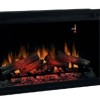

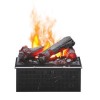

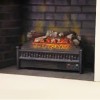
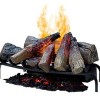
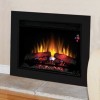
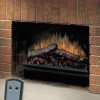
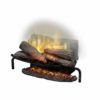
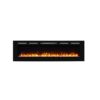
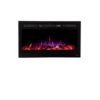
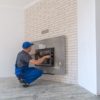

It’s awesome that you mention that using a gas fireplace is a very energy-efficient way to warm up your home. I’ve been looking for a way to save money on my heating costs, so I’m thinking about hiring someone to install a gas fireplace for me. I’m going to look for a good business in my area that offers gas fireplace installation services.
It’s cool that you mention that you can improve your home’s resale value by getting a gas fireplace for it. I’m planning on selling my house next year, so buying a gas fireplace sounds like a great idea. I’m going to see if there’s a good business in the area that can sell me a gas fireplace.
A gas fireplace is a great way to create warmth and spread holiday cheer. But regular inspections and maintenance are important. Gas fireplaces, sometimes called gas furnaces, are fairly easy to use when they are in good working condition, but a broken down fireplace can become difficult to operate or even dangerous.